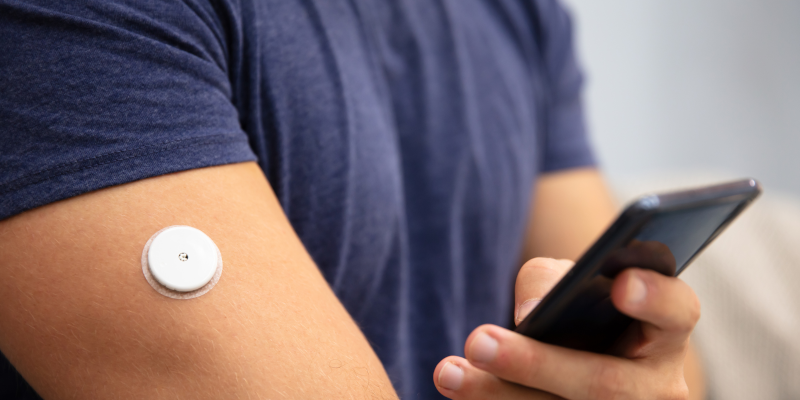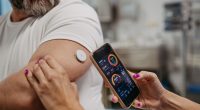An innovative paper-based biosensor could transform diabetes care by monitoring glucose levels via an individual’s sweat, latest research has shown.
Academics from Binghamton University in New York have developed a pain-free diabetes sensor that monitors glucose levels through sweat rather than blood.
The sensor uses Bacillus subtilis bacterial spores that germinate in response to glucose in potassium-rich bodily fluids, such as sweat.
The glucose level is determined by the amount of power generated.
Enzymatic reactions to blood droplets are used in current glucose monitoring systems.
- Common chemical linked to reduced insulin sensitivity in healthy adults
- Insulin sensitivity benefits of medication used to treat type 2 diabetes and obesity
- Insulin sensitivity: Lifestyle changes can stop condition developing into type 2 diabetes
Author Professor Choi said: “The problem with using enzymes is that they denature and deactivate. You need to store it in a refrigerator, but even then, their potency goes down over time. Our spore-based system can endure very harsh environments and activates only when the right conditions are met.”
Yang Lexi Gao said: “This is the only school I applied to in the US. I got accepted, applied for a visa and came directly here.
“Ever since then, Professor Choi has helped me a lot — not only in this research field, but also in my life. Because it was during COVID, everything was very bad, but he cared about me and always said, I want to make you successful.”
She added: “I want to do research to make the world better — it’s a big vision. I know the energy crisis is a major problem right now, so it’s fascinating that we can use bacteria to generate power.
“It’s clean and sustainable, and because it’s paper-based and disposable, it’s very easy and very cheap.”
- Seaweed discovery to revolutionise health sensor technology
- Type 2 diabetes risk not lowered by high-dose vitamin D supplements
- Dark chocolate could reduce type 2 diabetes risk
She continued: “My background in chemistry helps us do a lot of modification to these devices, and that really excites me.
“Assistant Professor Anwar Elhadad not only built those circuits, but he also got me involved—to explain each component, what they do, how they work and how they link together.”
She concluded: “I’m also taking online courses to get familiar with circuit design so I can build them by myself, because I can’t rely on others all the time.”
Choi said: “Everyone has a different potassium concentration in their sweat, and I don’t know how this concentration affects the glucose.
“The sensitivity is also lower than conventional enzymatic biosensors. But from this work, we created a new sensing mechanism to detect glucose. No one has done that yet.”
Read the study in the journal Microsystems & Nanoengineering.






